MMRS Signalling
The club has a fairly large main layout which is signalled in accordance with VR practice. The railway is HO scale (1:87) with a single track main line running over six stations. There are also two branch lines.
The layout has about 78 interlocked colour light signals which are operated by the station masters. When the station master offers a train to the next station, the receiving station master sets the signals to allow the train to proceed. As the train travels, the signals are cancelled automatically. There is a four metre long signal repeater board on the back wall of the clubrooms which displays the aspect of all signals on the layout to assist the train drivers and station masters.


Signals are interlocked with the points as a safety precaution. Interlocking prevents a signal being set unless there is a clear road for the train to travel, that is:
- The points are not set for the track on which the train is standing,
- On single line track (which is what we have at the club) if a signal is set for an opposing movement.
- Changing the points will cancel a signal if it has been set.
The signals for the Club’s layout are all hand made from brass castings and coloured LEDs. They are attached to the wiring with ex Telstra plugs and sockets which give very reliable contacts.
VR Signaling - a brief synopsis
VR signaling indicates to drivers not only whether they can proceed or not, but also at what speed they can go. The system is based on that used by the Pennsylvania Railroad in the USA. There are three speed ranges defined:
- Normal speed is up to the maximum speed allowed on that track, or the maximum speed allowed for a particular train (for example, some rolling stock may be limited in the speed at which they can travel).
- Medium speed indicates 40 km/h. This is used when a train is to negotiate a turnout, or diverge from its current path.
- Low speed indicates 15 km/h
Signal masts have either two or three lights arranged vertically, Automatic signal masts have two lights arranged diagonally.
In stations and yards, signals may also be located at trackside as a low level signal known as a dwarf. Dwarf signals are either two lights arranged vertically or a single light.
The combination of colours shown on the signal is known as the aspect, The following sections show the aspects for each signal condition:
All trains must come to a halt at this signal.
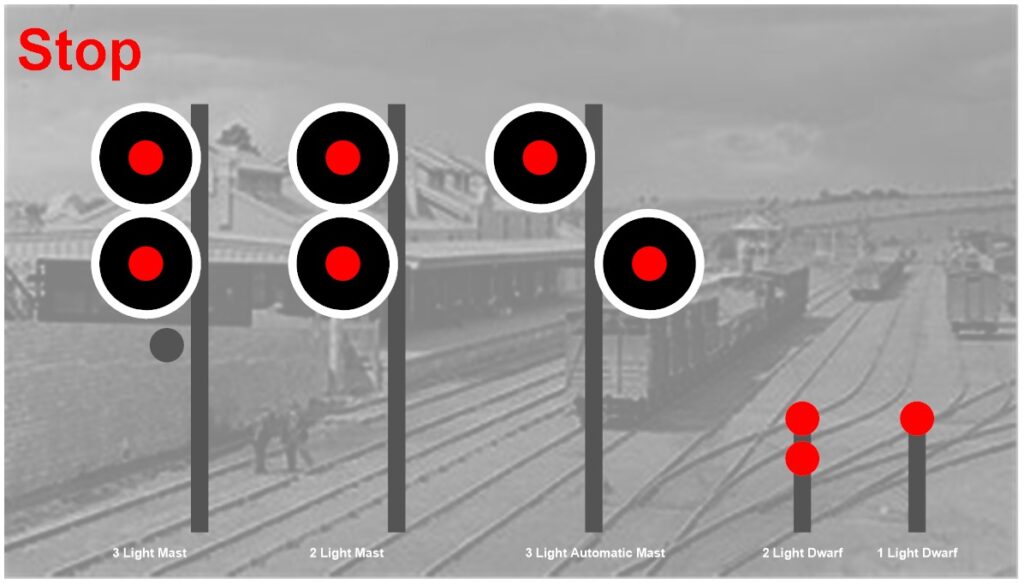
When the “Low Speed Caution” is displayed it indicates that the points are set in the correct position for the driver to proceed. It does not indicate the line is unoccupied. The driver must be prepared to stop short of any obstruction. The speed of the train must not exceed 15 km/h.
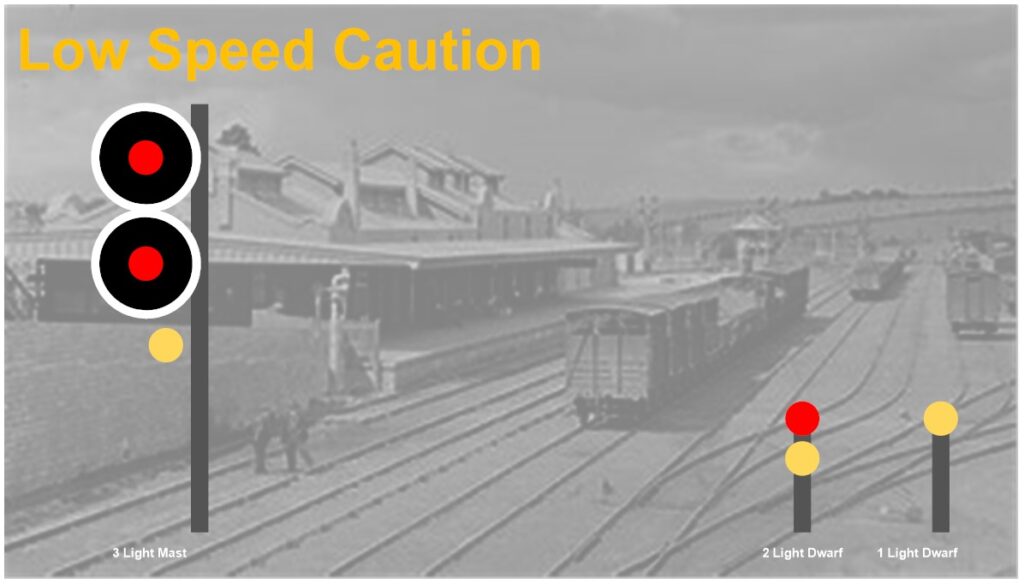
When “Medium Speed Warning” is displayed the Driver may proceed at medium speed and must be prepared to stop at the next signal. When medium speed signal is displayed the speed restriction applies to the whole section up to the next signal.
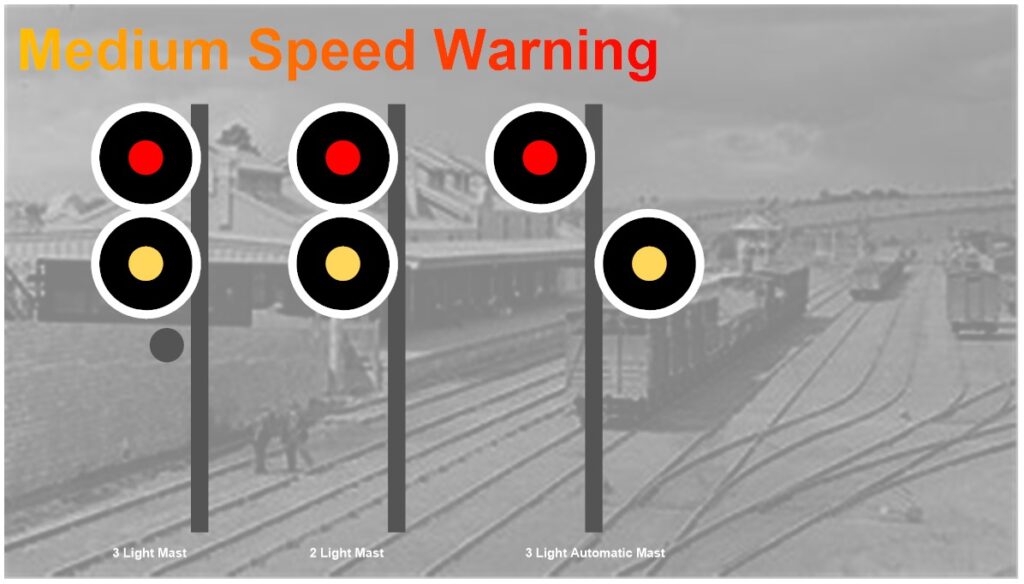
When “Clear Medium Speed” is displayed the driver must not exceed 40 km/h and can expect the next signal at proceed. When medium speed signal is displayed the speed restriction applies to the whole section up to the next signal, except in ATC and CTC where the speed restriction only applies till the rear of the train is clear of the restriction, like points.
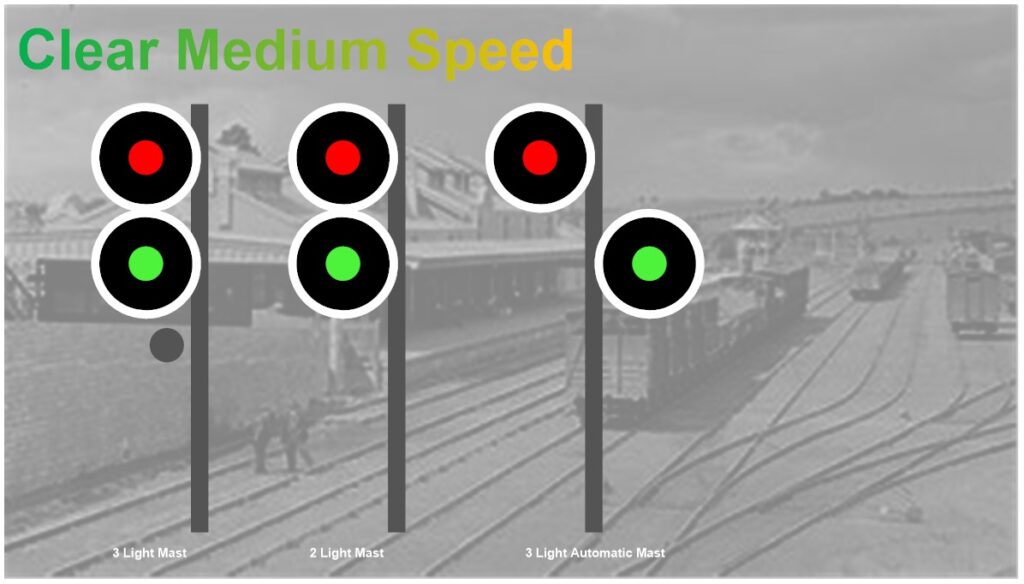
When “Reduce to Medium Speed” is displayed the driver may proceed at normal speed but must reduce to medium speed (40 km/h) before the next signal. If after passing “Reduce to Medium Speed” the driver observes the next signal is displaying an improved aspect such as normal speed, the driver may regulate the speed to the aspect of that signal.
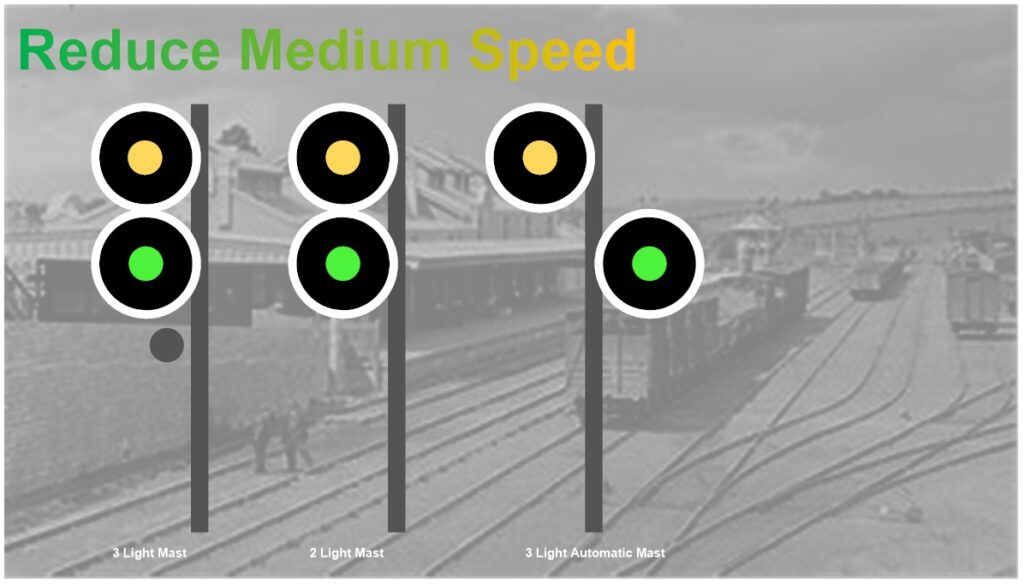
When “Normal Speed Warning” is displayed the driver must be ready to stop at the next signal.
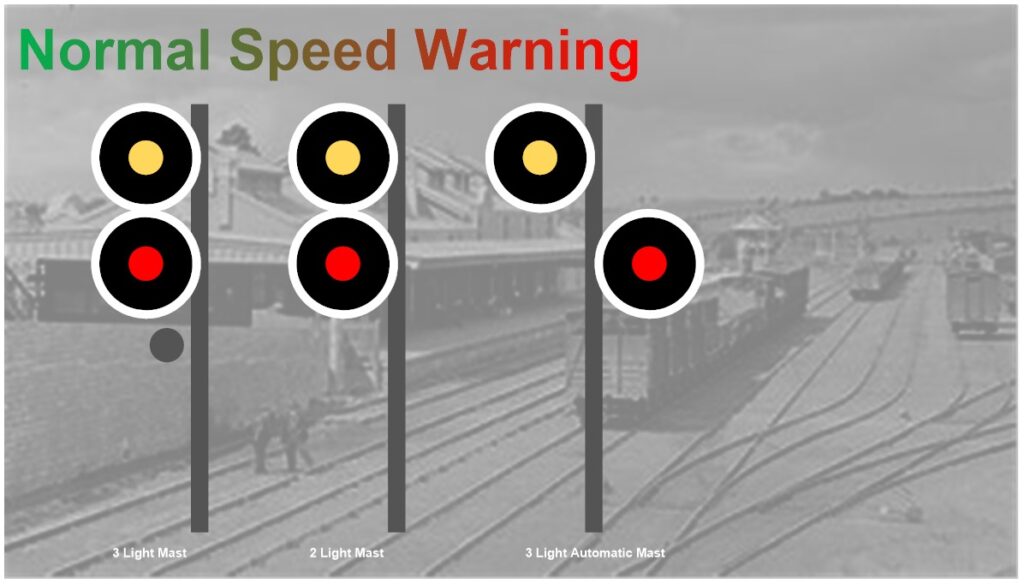
When “Clear Normal Speed” is displayed the driver can expect the next signal at proceed and may proceed at the maximum speed allowed
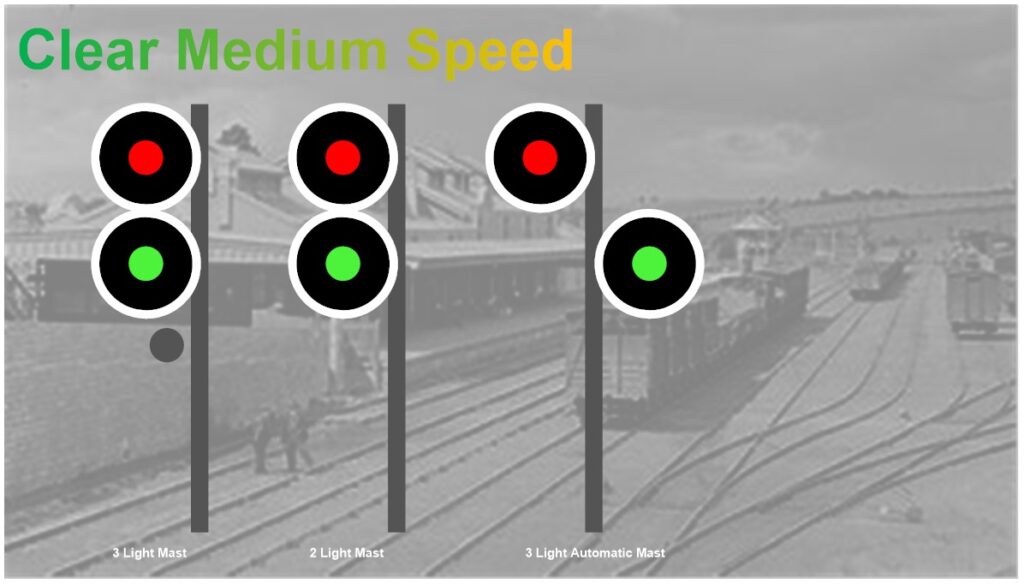
On the MMRS layout, a train approaching a set of points at which it is to diverge will pass signals showing:
- Green over Red (Clear Normal Speed), then
- Yellow over Green (Reduce to Medium Speed), then
- Red over Green (Clear Medium Speed), then
- Red over Red (Stop) if it is to stop, or
- Green over Red (Clear Normal Speed) if it is to proceed.
If the train is to continue on without diverging, the same signals will all show Green over Red (Clear Normal Speed).
A fuller description of VR signalling can be found in Ian Weickhardt’s articles in The Australian Model Railway Magazine issues for August and December 2007.